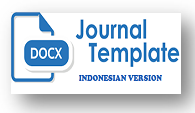Analisis Komparatif Performa AES-GCM dan ChaCha20-Poly1305 dalam Enkripsi Dokumen PDF Berbasis AEAD
DOI:
https://doi.org/10.29240/arcitech.v5i1.13645Keywords:
AEAD, AES-GCM, ChaCha20-Poly1305, PDF Encryption, Algorithm PerformanceAbstract
Digital transformation in electronic document services demands encryption mechanisms that are not only cryptographically secure but also performance-efficient. While AES-GCM and ChaCha20-Poly1305 are widely adopted AEAD algorithms, prior research has largely focused on their use in communication protocols or IoT devices, rather than in encrypting PDF documents. This study addresses that gap by empirically comparing both algorithms in real-world digital document processing scenarios. A quantitative experimental method was applied across two scenarios: mass processing of 5,000 small-to-medium PDF files (100KB–8MB), and individual processing of large files (1MB–200MB). Five performance metrics were analyzed: encryption time, decryption time, total processing time, stability, and throughput. Results show that AES-GCM consistently outperformed ChaCha20-Poly1305 across all metrics, offering faster processing and greater stability. Both algorithms produced a constant file size overhead of 28 bytes, which was negligible in terms of storage efficiency. This study contributes to the literature by providing empirical evidence to guide the selection of encryption algorithms in high-performance digital document storage systems.
Downloads
References
Abdulghani, H. A., Nijdam, N. A., Collen, A., & Konstantas, D. (2019). A Study on Security and Privacy Guidelines, Countermeasures, Threats: IoT Data at Rest Perspective. Symmetry, 11(6), 774. https://doi.org/10.3390/sym11060774
Arifin, Z., Subagja, I. K., & Hakim, A. (2025). Digital Governance: Studi Kasus Digitalisasi Pelayanan Publik Terpadu di Kabupaten Serang. Jurnal Sosial Teknologi, 5(1), 1105–1123. https://doi.org/10.59188/jurnalsostech.v5i1.31861
Beyne, T., Chen, Y. L., & Verbauwhede, M. (2025). A Robust Variant of ChaCha20-Poly1305. Cryptology EPrint Archive, 222. https://eprint.iacr.org/2025/222
Bhatt, N. (2024). Comparative Analysis of Hybrid Cryptosystems for Secure Image Encryption. 2024 IEEE International Conference on Public Key Infrastructure and Its Applications (PKIA), 1–7. https://doi.org/10.1109/PKIA62599.2024.10728982
Cagua, G., Gauthier-Umana, V., & Lozano-Garzon, C. (2025). Implementation and Performance of Lightweight Authentication Encryption ASCON on IoT Devices. IEEE Access. https://doi.org/10.1109/ACCESS.2025.3529757
Chan, J. L., Lee, W. K., Wong, D. C. K., Yap, W. S., Ooi, B. Y., & Goi, B. M. (2024). High throughput acceleration of NIST lightweight authenticated encryption schemes on GPU platform. Cluster Computing, 27, 11213–11235. https://doi.org/10.1007/s10586-024-04463-x
Degabriele, J. P., Govinden, J., Günther, F., & Paterson, K. G. (2021). The Security of ChaCha20-Poly1305 in the Multi-User Setting. Proceedings of the 2021 ACM SIGSAC Conference on Computer and Communications Security, 1981–2003. https://doi.org/10.1145/3460120.3484814
Fotovvat, A., Rahman, G. M. E., Vedaei, S. S., & Wahid, K. A. (2020). Comparative Performance Analysis of Lightweight Cryptography Algorithms for IoT Sensor Nodes. IEEE Internet of Things Journal, 8, 8279–8290. https://doi.org/10.1109/JIOT.2020.3044526
Handoyo, J., & Subakti, Y. M. (2020). KEAMANAN DOKUMEN MENGGUNAKAN ALGORITMA ADVANCED ENCRYPTION STANDARD (AES). Jurnal SITECH : Sistem Informasi Dan Teknologi, 3(2), 143–152. https://doi.org/10.24176/sitech.v3i2.5865
Kao, T. L., Wang, H. C., & Li, J. E. (2021). Safe MQTT-SN: a lightweight secure encrypted communication in IoT. Journal of Physics: Conference Series, 2020(1), 012044. https://doi.org/10.1088/1742-6596/2020/1/012044
Kempf, M., Jaeger, B., Zirngibl, J., Ploch, K., & Carle, G. (2024). QUIC on the Fast Lane: Extending Performance Evaluations on High-rate Links. Computer Communications, 223, 90–100. https://doi.org/10.1016/j.comcom.2024.04.038
Muhammed, R. K., Aziz, R. R., Hassan, A. A., Aladdin, A. M., Saydah, S. J., Rashid, T. A., & Hassan, B. A. (2024). Comparative Analysis of AES, Blowfish, Twofish, Salsa20, and ChaCha20 for Image Encryption. Kurdistan Journal of Applied Research, 9(1), 52–65. https://doi.org/10.24017/science.2024.1.5
Nurhaida, I., Ramayanti, D., & Riesaputra, R. (2017). DIGITAL SIGNATURE & ENCRYPTION IMPLEMENTATION FOR INCREASING AUTHENTICATION, INTEGRITY, SECURITY AND DATA NON-REPUDIATION. International Research Journal of Computer Science (IRJCS) Issue, 11, 4–14. https://doi.org/10.26562/IRJCS.2017.NVCS10080
Ogunjinmi, A. (2024, August 27). Encryption of Data at Rest: The Cybersecurity Last Line of Defense. Cyber Defense Magazine. https://www.cyberdefensemagazine.com/encryption-of-data-at-rest-the-cybersecurity-last-line-of-defense/
Rajavelsamy, R., Aswin, S., Ganesha, S., & Bharath Kumar, R. (2025). Performance Evaluation of Quantum Secure User Plane Traffic in Beyond 5G Systems. 2025 National Conference on Communications (NCC), 1–6. https://doi.org/10.1109/NCC63735.2025.10983296
Saraiva, D. A. F., Leithardt, V. R. Q., de Paula, D., Sales Mendes, A., González, G. V., & Crocker, P. (2019). PRISEC: Comparison of Symmetric Key Algorithms for IoT Devices. Sensors, 19(19), 4312. https://doi.org/10.3390/s19194312
Serrano, R., Duran, C., Sarmiento, M., Pham, C.-K., & Hoang, T.-T. (2022). ChaCha20–Poly1305 Authenticated Encryption with Additional Data for Transport Layer Security 1.3. Cryptography, 6(2), 30. https://doi.org/10.3390/cryptography6020030
Sirait, R. A. M., Nugraha, A., Serah, Y. A., & Marpaung, S. (2024). Electronic Stamp Validity: Cyber Law Perspective on the Effectiveness of E-Stamp Usage in E-commerce Transactions. Reformasi Hukum, 28(1), 70–79. https://doi.org/10.46257/jrh.v28i1.1036
Sudarsono, & Halim, A. (2019). ELECTRONIC SIGNATURE IN THE IMPLEMENTATION OF MAIN DUTIES AND JUDICIAL INSTITUTION FUNCTIONS. Jurnal Hukum Peratun, 2(2), 149–164. https://doi.org/10.25216/peratun.222019.149-164
Sugiarto, A. J., Lie, G., & Putra, M. R. S. (2024). Perlindungan Kepada Nasabah Bank Terhadap Kebocoran Data (Studi Kasus Kebocoran Data pada Bank Indonesia). Journal of Accounting Law Communication and Technology, 2(1), 107–114. https://doi.org/10.57235/jalakotek.v2i1.4298
Susanti, A., Prasetiya, B. A., Pangesti, O. D., Suryawati, L. D., & Saputro, I. A. (2024). Perbandingan Kinerja dan Keamanan Algoritma Kriptografi Modern AES-GCM dengan CHACHA20-POLY1305. Infomatek, 26(2), 253–264. https://doi.org/10.23969/infomatek.v26i2.19255
Syahrani, A. H., & Yuliadi, B. (2023). Load Balancing On Mikrotik at Karang Jaya Health Center Using NTH Method. PIKSEL : Penelitian Ilmu Komputer Sistem Embedded and Logic, 11(2), 267–282. https://doi.org/10.33558/piksel.v11i2.7107
Vivian, Y. F. A. (2023, February 22). Kenali e-Meterai POS Pajakku, Bubuhkan Meterai Elektronik Terpercaya. Artikel Pajakku. https://artikel.pajakku.com/kenali-e-meterai-pos-pajakku-bubuhkan-meterai-elektronik-terpercaya/
Downloads
Published
How to Cite
Issue
Section
Citation Check
License
Copyright (c) 2025 Muhammad Patria, Dea Andini Andriati

This work is licensed under a Creative Commons Attribution-NonCommercial-ShareAlike 4.0 International License.
Authors who publish with Arcitech: Journal of Computer science and Artificial Intelligence agree to the following terms:
- Authors retain copyright and grant the journal right of first publication with the work simultaneously licensed under a Creative Commons Attribution-NonCommercial-ShareAlike 4.0 International License (CC BY-NC-SA 4.0) that allows others to share the work with an acknowledgment of the work's authorship and initial publication in this journal.
- Authors are able to enter into separate, additional contractual arrangements for the non-exclusive distribution of the journal's published version of the work (e.g., post it to an institutional repository or publish it in a book), with an acknowledgment of its initial publication in this journal.
- Authors are permitted and encouraged to post their work online (e.g., in institutional repositories or on their website) prior to and during the submission process, as it can lead to productive exchanges, as well as earlier and greater citation of published work (See The Effect of Open Access).













